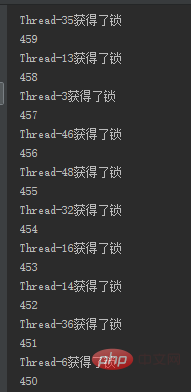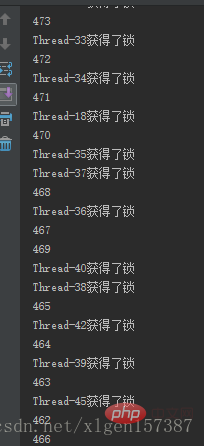参数简介
innodb_additional_mem_pool_size 是 InnoDB 用来保存数据字典信息和其他内部数据结构的内存池的大小,单位是 byte,参数默认值为8M。数据库中的表数量越多,参数值应该越大,如果 InnoDB 用完了内存池中的内存,就会从操作系统中分配内存,同时在 error log 中打入报警信息。目前8.0+的版本已经移除了这个参数。
innodb_use_sys_malloc 配置为 ON 时,innodb_additional_mem_pool_size 失效(直接从操作系统分配内存)。
innodb_additional_mem_pool_size 和 innodb_use_sys_malloc 在 MySQL 5.7.4 中移除。
参数合理值预估
./storage/innobase/handler/ha_innodb.cc:
srv_mem_pool_size = (ulint) innobase_additional_mem_pool_size;
./storage/innobase/srv/srv0srv.cc: mem_init(srv_mem_pool_size);
storage/innobase/mem/mem0dbg.cc: mem_comm_pool = mem_pool_create(size);
从源码中可以看出,innodb_additional_mem_pool_size 的参数值用于指定内存池 mem_comm_pool 的大小;
storage/innobase/mem/mem0mem.cc:
block = static_cast<mem_block_t*>(
mem_area_alloc(&len, mem_comm_pool));
函数 mem_area_alloc 从 mem_comm_pool 内存池中分配内存;
storage/innobase/mem/mem0pool.cc:
if (UNIV_LIKELY(srv_use_sys_malloc)) {
return(malloc(*psize));
}
........
area = UT_LIST_GET_FIRST(pool->free_list[n]);
if (area == NULL) {
ret = mem_pool_fill_free_list(n, pool);
if (ret == FALSE) {
mem_n_threads_inside--;
mutex_exit(&(pool->mutex));
return(ut_malloc(size));
}
area = UT_LIST_GET_FIRST(pool->free_list[n]);
}
如果 innodb_use_sys_malloc (上述代码中的srv_use_sys_malloc) 设置为 ON,或者内存池中没有足够的内存可供分配,则直接从操作系统中分配内存。
mem_area_alloc 调用栈如下(use database 触发断点)
#0 mem_area_alloc
#1 0x000000000118048d in mem_heap_create_block_func
#2 0x000000000149a390 in mem_heap_create_func
#3 0x00000000014aa6d5 in dict_load_table
#4 0x0000000001481082 in dict_table_open_on_name
#5 0x000000000109d769 in ha_innobase::open
#6 0x00000000006d5245 in handler::ha_open
#7 0x0000000000b830ae in open_table_from_share
#8 0x000000000091deee in open_table
#9 0x0000000000922eea in open_and_process_table
#10 0x000000000092492f in open_tables
#11 0x0000000000926c21 in open_normal_and_derived_tables
#12 0x0000000000a83834 in mysqld_list_fields
#13 0x00000000009f28e1 in dispatch_command
#14 0x00000000009eeb51 in do_command
#15 0x0000000000982cb6 in do_handle_one_connection
#16 0x000000000098238b in handle_one_connection
#17 0x0000000001877f91 in pfs_spawn_thread
#18 0x0000003d8c007851 in start_thread ()
#19 0x0000003d8bce767d in clone ()
函数 dict_load_table 中会为每张表分配32k的空间 ( mem_heap_create(32000) 实际分配32744字节空间 ),数据字典中每张表所占空间的上限是32k,具体占用空间根据列数和索引数量分配,分配完成后回收32k中未使用的空间
storage/innobase/dict/dict0load.cc: heap = mem_heap_create(32000);
show engine innodb status BUFFER POOL AND MEMORY Dictionary cache
实际使用的数据字典缓存,不会超过每张表32k,实测过程中,每张表不包括索引占4K,每个索引占2k,列数对空间占用影响不大。
测试用表如下,未建索引时,1000张表占用空间4M,增加列占用空间增长不明显,每增加一个索引,占用空间增加2M,可以估测每张表占用空间4k(不含索引),每个索引占用空间2k。
Create Table: CREATE TABLE `1000` (
`id` int(11) DEFAULT NULL,
`a` varchar(255) DEFAULT NULL,
`b` varchar(255) DEFAULT NULL,
`c` varchar(255) DEFAULT NULL,
`d` varchar(255) DEFAULT NULL,
KEY `a` (`a`),
KEY `b` (`b`),
KEY `id` (`id`)
) ENGINE=InnoDB DEFAULT CHARSET=latin1
引入和移除该参数的原因
早期操作系统的内存分配器性能和可伸缩性较差,并且当时没有适合多核心CPU的内存分配器。所以,InnoDB 实现了一套自己的内存分配系统,做为内存系统的参数之一,引入了innodb_additional_mem_pool_size。
随着多核心CPU的广泛应用和操作系统的成熟,操作系统能够提供性能更高、可伸缩性更好的内存分配器,包括 Hoard、libumem、mtmalloc、ptmalloc、tbbmalloc 和 TCMalloc 等。InnoDB 实现的内存分配器相比操作系统的内存分配器并没有明显优势,所以在之后的版本,会移除 innodb_additional_mem_pool_size 和 innodb_use_sys_malloc 两个参数,统一使用操作系统的内存分配器。
文章转自:https://developer.aliyun.com/article/32384
官方文档:https://dev.mysql.com/doc/refman/8.0/en/dynamic-system-variables.html





近期评论